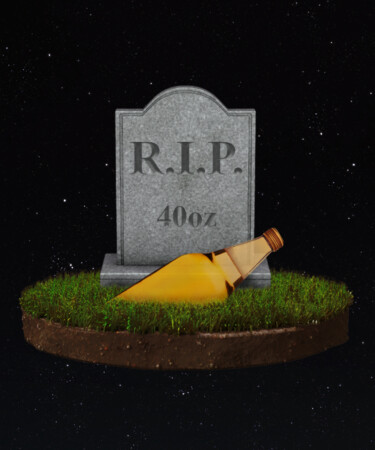The global supply chain has been an area of concern since the onset of the Covid-19 pandemic, which provided the “perfect storm” for shortages to arise. During a time when consumers spent weeks on lockdown and needed plenty of cleaning, medical, and food supplies, there were considerable spikes in demand and labor shortages that put stress on supply chains. The struggle was felt by us all, and from toilet paper to alcohol, it seemed almost every commodity was seeing the effects.
While current trends suggest that the disruption is easing up a bit, recent news has shown that the beer industry may be headed for the same fate as hand sanitizer and baby formula. For some consumers, this has meant the disappearance of the once readily available 40-ounce bottled beers from macrobreweries like Budweiser and Miller Lite.
Originally produced with the intention to be shared, 40-ounce bottles gained popularity by way of malt liquor, cultural references in hip-hop songs, and college games like Edward Fortyhands. However, despite the 40’s pop-culture residence, there has been a recent decline in its production.
For the past two years, large and small breweries have faced production challenges. With a scarcity of CO2 and increased costs for packaging materials like cardboard and glass bottles, many brewing companies were forced to pivot production.
According to Lester Jones, chief economist at the National Beer Wholesalers Association (NBWA), beer’s supply chain issues first began with a can shortage that later evolved into the glass shortage we’re facing today. “The glass bottle shortage is the tail end of the supply chain issues caused by Covid,” he says. And while shipping struggles have contributed to the industry’s shift to cans, it’s just one of the reasons for the decline in 40-ounce brews. “Within the alcohol industry, glass bottles are often used to show the differentiation between a brand’s products,” Jones says. In the case of uniquely shaped and sized bottles such as the 40-ounce, a shortage of glass has meant a slowing of production.
Pre-pandemic, many breweries were already feeling the pressure when it came to sourcing glass due to rising energy and production costs. In June 2022, reports surfaced of a bottle shortage that hit the German beer industry hard after glass factory shutdowns. Geopolitical tensions from the war in Ukraine have further exasperated the problem as Ukraine is a major supplier of glass for European countries.
But, as Jones explains, the issues around glassware in the beer industry will not lead to the end of beer itself. “The evolution of packaging for beer has a long history, from steel kegs to cans to glass, and bottles like the 40-ounce are so niche that their popularity and consumer demographic is limited,” he says. As fewer 40-ounce-sized bottles are being produced and distributed, consumers will inevitably make the shift to cans, just as brewers have. “We may run out of 40s, but there will always be other options,” Jones says.
